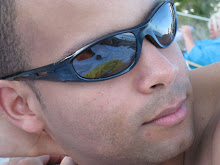Three Kings Festival in Juana Diaz


 Bright and early we departed the UPR Cayey campus for our trip to Juana Diaz for the celebration of Three Kings Day, where a uniquely large and festive parade and craft fair is held annually (for over a hundred years). Community, school and religious groups dress in costumes reminiscent of nativity scenes (shepherds mostly; few kings) and parade down the central avenue before arriving at the high altar constructed outside the main cathedral where an outdoor Catholic mass is held following the procession. In the main plaza, a craft fair is held, selling various wood, leather, art, and jewelry crafts. As this holiday is a tremendous celebration in the Puerto Rican culture, it was fitting that we were able to see the grand pageantry that this little town had to offer.
Bright and early we departed the UPR Cayey campus for our trip to Juana Diaz for the celebration of Three Kings Day, where a uniquely large and festive parade and craft fair is held annually (for over a hundred years). Community, school and religious groups dress in costumes reminiscent of nativity scenes (shepherds mostly; few kings) and parade down the central avenue before arriving at the high altar constructed outside the main cathedral where an outdoor Catholic mass is held following the procession. In the main plaza, a craft fair is held, selling various wood, leather, art, and jewelry crafts. As this holiday is a tremendous celebration in the Puerto Rican culture, it was fitting that we were able to see the grand pageantry that this little town had to offer.Antonio Martorell’s Studio in Ponce
 Antonio is a world-renowned artist, yet chooses to describe himself as a communicator principally because he believes that the idea of “the artist” is too lofty and his favorite compliment is to be told that he speaks directly to the people, bringing ideas, concepts, and culture normally deemed too high class down to the masses, explaining it in language that is accessible by the common folk.
Antonio is a world-renowned artist, yet chooses to describe himself as a communicator principally because he believes that the idea of “the artist” is too lofty and his favorite compliment is to be told that he speaks directly to the people, bringing ideas, concepts, and culture normally deemed too high class down to the masses, explaining it in language that is accessible by the common folk. 

 Martorell’s work has not existed without controversy, having been investigated by the FBI at some point and having his home destroyed as they attempted to uncover some evidence that was not to be founded, but such is the life of the liberal artist in Latin America. These works here depict his reaction to the invasion of Afghanistan in 2001. The helicopter painting above was painted on an old carpet from his New York apartment, as though from the floors of the “attacked”, we can see the reflection of the innocents who would be harmed as a result. The other images were from a series painted on mattresses, one indicating a woman looking out the widow, perhaps in awe of what happens around her; the other raises her dress revealing her sex—the only weapon she possesses.
Martorell’s work has not existed without controversy, having been investigated by the FBI at some point and having his home destroyed as they attempted to uncover some evidence that was not to be founded, but such is the life of the liberal artist in Latin America. These works here depict his reaction to the invasion of Afghanistan in 2001. The helicopter painting above was painted on an old carpet from his New York apartment, as though from the floors of the “attacked”, we can see the reflection of the innocents who would be harmed as a result. The other images were from a series painted on mattresses, one indicating a woman looking out the widow, perhaps in awe of what happens around her; the other raises her dress revealing her sex—the only weapon she possesses. 
 Susan (one of our program participants) was lucky enough to be sketched by the artist. Martorell said it was not enough to see the work that he produced—we must see the process of artistic creation to understand the fluidity with which one must work. The drawing was not just a reflection of what he saw seated before him, but also what emerged from the combination or charcoal, paper, and his artistic vision.
Susan (one of our program participants) was lucky enough to be sketched by the artist. Martorell said it was not enough to see the work that he produced—we must see the process of artistic creation to understand the fluidity with which one must work. The drawing was not just a reflection of what he saw seated before him, but also what emerged from the combination or charcoal, paper, and his artistic vision. Much of today’s work was emblematic of the potential for artistic expression that exists as a regular part of the culture. As we move toward creating our forum theatre presentation next week, today’s experiences seem to provide a depiction of the raw material that we can rely on—that is, culture not only as an artistic influence, but also part of the material we can draw upon when creating our own presentation.
Antonio Martorell’s Artwork















No comments:
Post a Comment